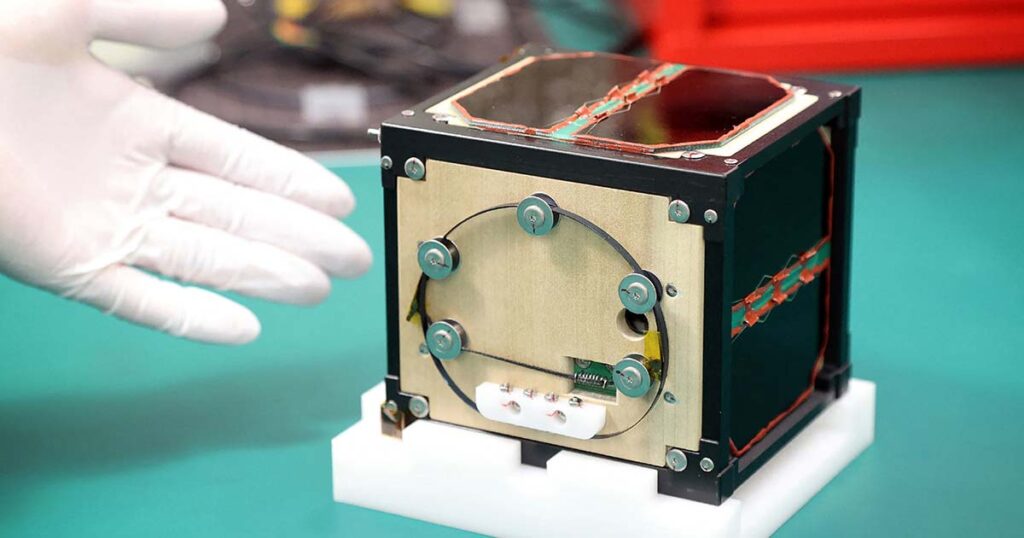Timber UpJapan has made a groundbreaking achievement in aerospace engineering with the successful launch of LignoSat, the world’s first satellite constructed entirely from wood. This innovative project stems from a collaboration between Kyoto University and Sumitomo Forestry, culminating in a launch aboard a SpaceX Falcon 9 rocket. The motivation behind LignoSat extends beyond mere novelty; it aims to set a precedent for sustainable materials’ use in space. The team hopes that wooden satellites can mitigate environmental impacts upon their decommissioning, as wooden components will burn harmlessly in the Earth’s atmosphere, as opposed to metal counterparts that may release toxic particles. This endeavor exemplifies a significant shift toward eco-friendly technology in a domain that has historically contributed to pollution and debris in Earth’s orbit.
One of the most compelling aspects of LignoSat is its potential for reduced environmental impact, particularly during reentry. Unlike metal satellites, which release aluminum oxide particles that can harm the ozone layer, wooden satellites could offer a more sustainable alternative. Japanese astronaut Takao Doi emphasizes the long-term potential of using timber in space exploration. He envisions a future where humanity can sustainably live and work beyond Earth, utilizing wood—a material that can be regenerated rather than mined. Doi also raises concerns about the possibility of banning metal satellites in the future due to their detrimental environmental effects, suggesting that proving the functionality of LignoSat could position wooden technology as a favored alternative for future missions, particularly with SpaceX.
The design of LignoSat further highlights innovative engineering techniques, employing traditional Japanese woodworking methods to join its components without screws or glue. This approach not only maintains structural integrity but also showcases the aesthetic and technical versatility of wood in high-tech applications. After rigorous testing, the researchers determined that lumber from the Japanese magnolia tree showed the best resilience to the extreme conditions of space. As the spacecraft orbits Earth for six months, it will gather critical data on how the wooden material withstands the harsh environmental factors while also assessing its effectiveness at shielding sensitive electronic components from space radiation.
Though it may seem counterintuitive, the use of wood in a high-tech satellite illustrates a growing trend toward revisiting traditional materials in modern technology. The idea that something seemingly outdated can be reimagined as cutting-edge plays into the broader narrative of sustainability and innovation in the 21st century. Kenji Kariya, manager at Sumitomo Forestry’s Tsukuba Research Institute, articulates this perspective, arguing that human expansion into space could invigorate the timber industry by positioning wood as a viable resource for future construction and manufacturing in extraterrestrial environments.
In the context of current environmental challenges and the need for sustainable solutions, projects like LignoSat underscore the importance of innovative thinking in space exploration. It opens discussions about how materials traditionally considered inferior or outdated can find new life in modern technology, revitalizing industries and contributing to a more sustainable way forward. The aerospace sector’s evolving landscape, with increasing interest in eco-friendly and renewable materials, could lead to exciting developments in how we approach space infrastructure. The evident potential for further research into wooden satellites could pave the way for a new era of sustainable space technology.
Overall, LignoSat stands as a symbol of both technological advancement and ecological responsibility in space exploration. As it embarks on its mission, it embodies a crucial shift towards the integration of natural materials in cutting-edge engineering, offering lessons for future projects and highlighting the symbiotic relationship between nature and technology. The success of this venture may not only redefine materials used in satellite construction but also inspire a comprehensive reevaluation of resources available to humanity as we venture further into the cosmos. By creatively implementing sustainable practices, we can potentially nurture a more harmonious coexistence with our planet as humanity extends its reach beyond Earth.

